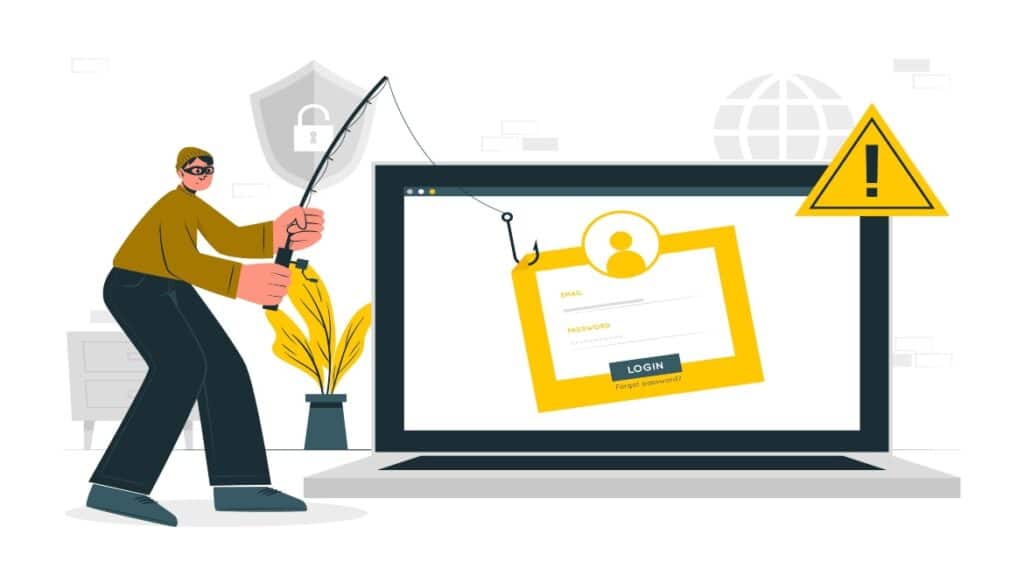The threat of phishing attacks remains a concern for organizations, and they understand the risks involved. Many companies incorporate phishing testing as part of their security strategy to address these dangers. By simulating real-life phishing attacks, organizations can educate their employees and gauge their vulnerability to these tactics. In this post, we will explore the recommended approaches for conducting phishing testing.
Contents
Why is Phishing Testing Important for Organizations?
Over time, phishing attacks have become increasingly sophisticated. Hackers utilize methods like engineering techniques and well-crafted emails to trick employees into revealing sensitive information or performing unintended actions that compromise security. The consequences can range from loss to damage to customer trust and intellectual property theft.
Through a phishing test, organizations can proactively evaluate their vulnerabilities by replicating real-world scenarios. This practice allows them to identify weaknesses in their security systems and assess employee knowledge without jeopardizing data or exposing themselves to external threats. Following the same, organizations can optimize security through phishing simulation exercises to prevent any further complications.
Recommended Strategies for Phishing Testing
1. Define objectives
Establishing a goal for your phishing testing initiative is vital in accurately assessing your organization’s susceptibility level.
When it comes to assessing awareness or pinpointing vulnerabilities in departments, it is crucial to establish measurable goals. This will not only help you track progress but also ensure the allocation of resources.
2. Embrace a range of attack scenarios
To conduct a phishing testing program, it is important to simulate types of attacks that closely resemble real-world situations and expand beyond email-based phishing attempts. Consider methods like phone calls, SMS messages, or even USB drop-offs. By doing so, employees will gain an understanding of potential threats they may encounter.
3. Create engaging content
Crafting convincing phishing emails requires creativity and attention to detail. Use intriguing lines that pique curiosity while remaining plausible within the context of your industry and work environment. Personalization can also significantly enhance believability; incorporating news updates or company-specific information can raise awareness and empower employees to identify threats effectively.
4. Segment Your Employee Base
Organizations consist of teams working with data sets and varying security levels. Tailor your phishing simulations accordingly by considering factors such as role, department, or level of access to information. This approach allows for customized content delivery and efficient evaluation of risk levels while creating training materials specific to each group.
5. Gradual Increase in Complexity:
Organizations should implement an approach to combat the evolving threat of phishing attacks effectively. Begin with phishing tests. Gradually increase the complexity of subsequent simulations. This mirrors the tactics employed by hackers who continuously refine their techniques to prolong their attacks without detection. By exposing employees to challenging scenarios, organizations can equip them with skills in identifying red flags and suspicious activities.
6. Focus on Educational Aspects:
It is important to view phishing testing not as a means to catch employees making mistakes but as an educational tool. After a simulated attack occurs, provide feedback. Use it as an opportunity to educate employees about common techniques used by hackers. This will help them better protect themselves from falling victim to these schemes in real-life situations.
7. Adopt Continuous Testing:
Continuous testing is crucial in today’s evolving cyber landscape. Annual assessments are no longer sufficient, given the pace at which threats evolve. Consider implementing campaigns throughout the year, taking into account feedback from simulations, conducting training sessions to refresh knowledge, and scheduling tests designed to measure progress over time.
In conclusion, organizations must adapt their security measures to combat evolving cyber threats, especially phishing attacks that can challenge advanced cybersecurity systems.
By including measures such as conducting phishing tests as part of their security plan, companies can significantly improve their ability to identify weaknesses in internal systems. This approach also empowers employees with the knowledge and skills to protect themselves against social engineering techniques. By adhering to the recommended strategies mentioned earlier, businesses can strengthen their defenses against phishing attacks not only in 2024 but in the future, thus ensuring a safer environment for both themselves and their esteemed customers.

